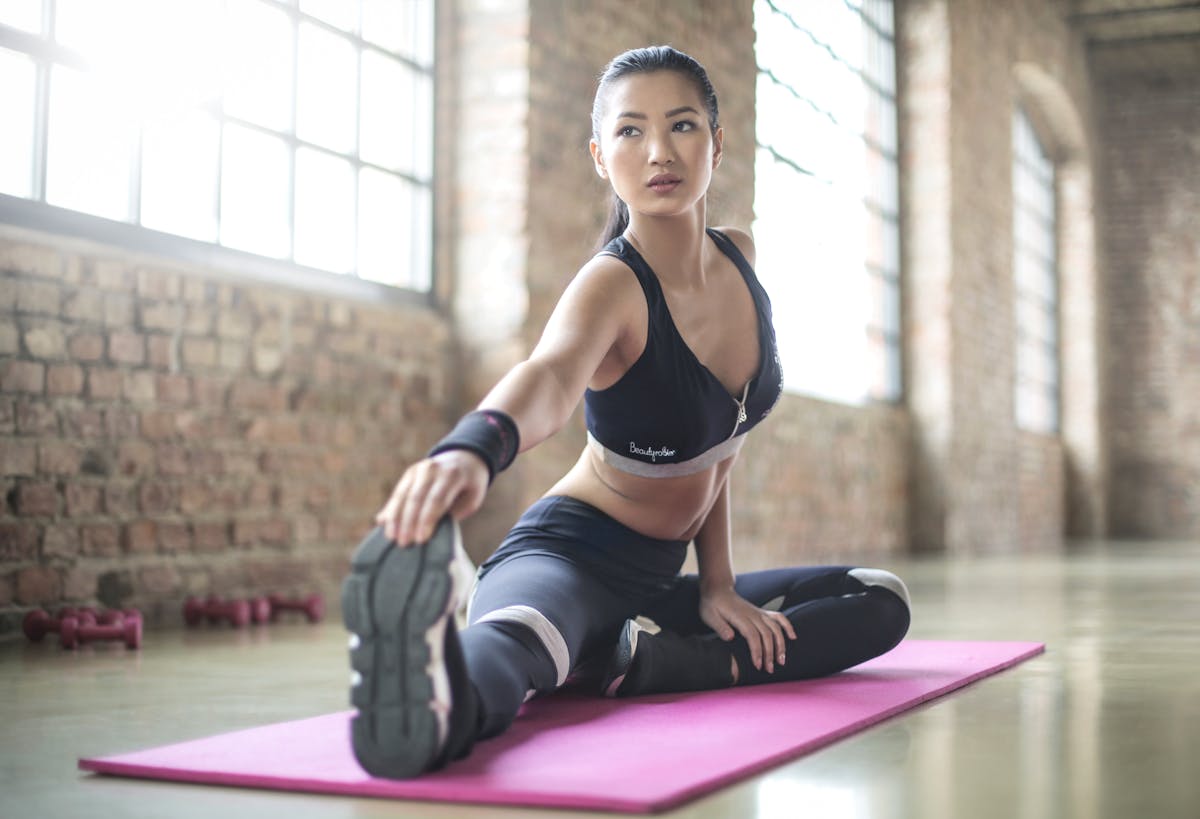Introduction to Yoga for Relaxation
Yoga, an ancient practice originating in India, is renowned for its ability to harmonize the body, mind, and spirit. This holistic discipline encompasses physical postures, breathing techniques, and meditation, all designed to foster overall well-being. In today's fast-paced world, where stress is a constant companion, yoga emerges as a powerful tool for relaxation. By integrating yoga into your routine, you can achieve a state of tranquility and balance, countering the effects of daily stressors.

The Science Behind Yoga and Relaxation
Understanding Stress
Stress is a natural response to challenging situations, but chronic stress can lead to various health issues, including anxiety, depression, and cardiovascular problems. Yoga addresses this by activating the parasympathetic nervous system, which promotes relaxation and reduces stress hormones like cortisol.
How Yoga Reduces Stress
Yoga combines physical postures, deep breathing, and meditation, which work together to calm the nervous system. The physical aspect of yoga releases tension in the muscles, while controlled breathing techniques lower the heart rate and induce a state of calm. Meditation helps in focusing the mind and reducing the incessant flow of stress-inducing thoughts.
Studies Supporting Yoga for Relaxation
Numerous studies highlight the effectiveness of yoga in reducing stress. Research published in the Journal of Clinical Psychology shows that regular yoga practice significantly lowers stress levels and improves overall mental health. Another study in the Journal of Alternative and Complementary Medicine found that yoga practitioners experience lower levels of anxiety and higher levels of life satisfaction.
Mental Health Benefits of Yoga
Anxiety Reduction
Yoga helps in managing anxiety by promoting relaxation and mindfulness. Poses that focus on deep breathing and gentle stretching can soothe the mind and reduce anxiety symptoms. Studies have shown that yoga can be as effective as cognitive-behavioral therapy (CBT) in treating anxiety disorders.
Depression Management
Regular yoga practice can alleviate symptoms of depression by increasing serotonin levels, the "feel-good" hormone, and reducing the levels of cortisol. Yoga also provides a sense of community and support, which can be crucial for individuals battling depression.
Enhancing Mental Clarity
Yoga enhances mental clarity by improving concentration and focus. The meditative aspect of yoga trains the mind to stay present, which can help in clearing mental clutter and enhancing cognitive function.
Physical Benefits of Yoga
Muscle Relaxation
Yoga stretches and strengthens the muscles, promoting relaxation and reducing muscle tension. Poses like the Child's Pose and Corpse Pose are particularly effective for muscle relaxation.
Improved Flexibility
Yoga enhances flexibility by stretching the muscles and soft tissues. Improved flexibility can lead to better posture and reduced risk of injury.
Pain Relief
Yoga can help in managing chronic pain by improving flexibility, reducing muscle tension, and enhancing mental resilience. Practices like Restorative Yoga are specifically designed to alleviate pain and promote healing.
Popular Yoga Poses for Relaxation
Child's Pose (Balasana)
Child's Pose is a gentle resting pose that calms the mind and relieves tension in the body. It is especially effective for stretching the back and promoting relaxation.
Corpse Pose (Savasana)
Corpse Pose is a deeply restorative pose that involves lying flat on the back, allowing the body and mind to enter a state of deep relaxation. It is often practiced at the end of a yoga session to integrate the benefits of the practice.
Legs-Up-the-Wall Pose (Viparita Karani)
This pose involves lying on the back with the legs extended up against a wall. It helps in relieving tension in the legs and lower back, promoting relaxation and improved circulation.
Breathing Techniques in Yoga
Pranayama
Pranayama refers to a set of breathing exercises that regulate the breath and enhance the flow of prana, or life force, in the body. Techniques like Nadi Shodhana (Alternate Nostril Breathing) and Ujjayi (Victorious Breath) are commonly practiced to promote relaxation.
Benefits of Deep Breathing
Deep breathing activates the parasympathetic nervous system, reducing stress and promoting relaxation. It also improves oxygen flow to the brain, enhancing mental clarity and focus.
Techniques for Beginners
Beginners can start with simple breathing exercises like Diaphragmatic Breathing, which involves deep breaths into the diaphragm, and Box Breathing, a technique that involves equal intervals of inhaling, holding, exhaling, and holding the breath.
Incorporating Yoga into Daily Life
Creating a Routine
Incorporating yoga into your daily routine can be as simple as setting aside 15-30 minutes each day for practice. Consistency is key to reaping the benefits of yoga for relaxation.
Finding Time for Yoga
Finding time for yoga amidst a busy schedule can be challenging. However, integrating short yoga sessions into your morning or evening routine can make a significant difference in your stress levels and overall well-being.
Combining Yoga with Other Relaxation Techniques
Yoga can be combined with other relaxation techniques like meditation, mindfulness, and aromatherapy to enhance its benefits. Creating a holistic relaxation routine can help in managing stress more effectively.
Yoga for Better Sleep
Yoga Poses for Sleep
Certain yoga poses, such as the Forward Bend and Reclining Bound Angle Pose, are particularly effective for promoting better sleep. These poses help in calming the mind and preparing the body for rest.
Nighttime Yoga Routine
A nighttime yoga routine can include gentle stretches, deep breathing, and relaxation poses to wind down before bed. Practices like Yoga Nidra, a guided meditation technique, can also be beneficial for promoting deep sleep.
How Yoga Improves Sleep Quality
Yoga improves sleep quality by reducing stress, calming the mind, and relaxing the body. Regular practice can help in establishing a healthy sleep pattern and alleviating insomnia.
Yoga and Mindfulness
Connecting Body and Mind
Yoga promotes mindfulness by encouraging practitioners to focus on the present moment and their bodily sensations. This connection between body and mind enhances self-awareness and reduces stress.
Mindfulness Techniques
Mindfulness techniques, such as body scan meditation and mindful breathing, can be integrated into yoga practice to enhance its relaxing effects. These techniques help in cultivating a state of present-moment awareness and calm.
Benefits of Mindfulness in Yoga
Mindfulness in yoga enhances the practice by promoting mental clarity, emotional balance, and overall well-being. It helps in reducing stress and anxiety, improving focus, and fostering a deeper sense of inner peace.
Yoga Classes and Styles for Relaxation
Restorative Yoga
Restorative Yoga is a gentle style of yoga that focuses on relaxation and healing. It involves holding poses for extended periods with the support of props, allowing the body to relax deeply.
Yin Yoga
Yin Yoga involves holding poses for several minutes to stretch the connective tissues and promote relaxation. This style of yoga is particularly effective for calming the mind and relieving stress.
Finding the Right Class for You
Finding the right yoga class for relaxation involves exploring different styles and instructors to see what resonates with you. It's important to choose a class that aligns with your relaxation goals and provides a supportive environment.
Yoga Retreats and Workshops
Benefits of Yoga Retreats
Yoga retreats offer an immersive experience that





You must be logged in to post a comment.